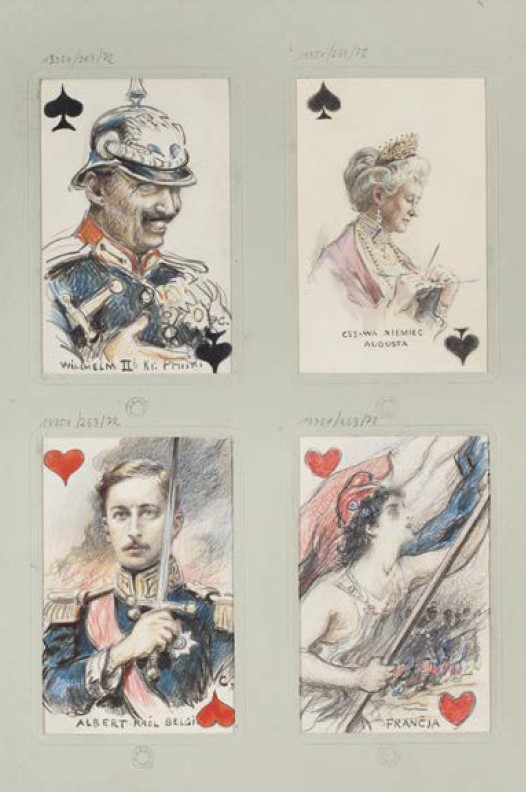Abstract
The paper discusses selected designs of playing cards by Czesław Tański (1862–1942), comprising the deck titled Solitaire. Cards from the First Two Years of the European War kept in the Room of Prints and Drawings at the National Museum in Warsaw. It aims to answer the question of why the artist decided to show these and not other episodes of the Great War and the characters involved in them, what the details of specific representations may mean, and what particular artistic means were employed. The paper also traces the photographic sources that probably inspired Tański’s drawings, thus providing a broader context for their analysis. Tański’s Solitaire has been discussed in the context of the social background of the events portrayed on the cards, as well as the narrative of the Great War that it proposes.

This work is licensed under a Creative Commons Attribution 4.0 International License.
Copyright (c) 2024 Paula Mroczkowska-Król (Author)


